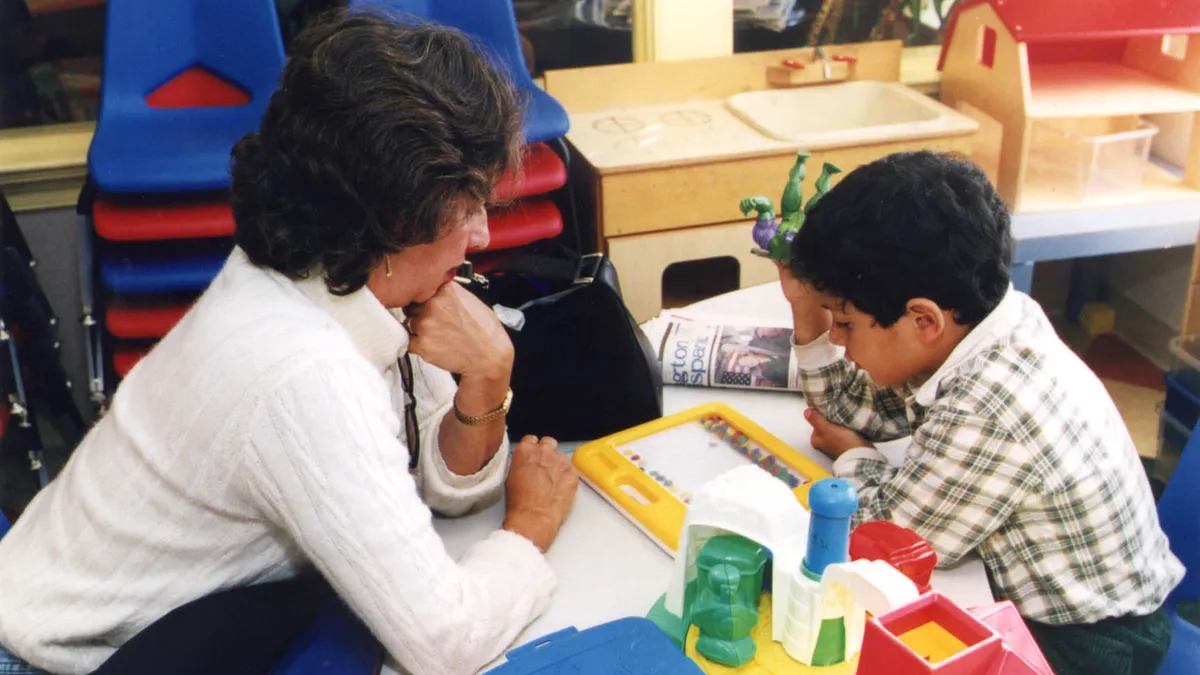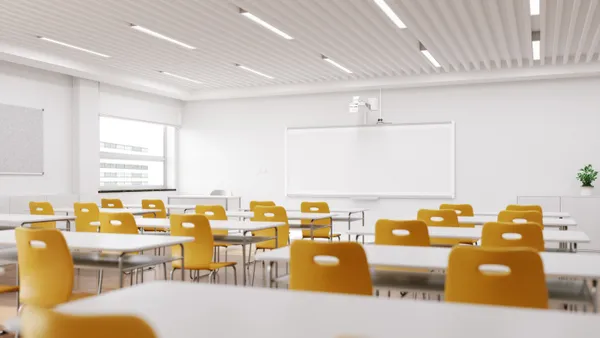Dive Brief:
- A new report, “The State of Racial Diversity in the Educator Workforce,” published by the U.S. Department of Education in conjunction with the National Summit on Teacher Diversity held at the Department finds that fewer than 18% of elementary and secondary school teachers are individuals of color.
- At the same time, the report says, 49% of public elementary and secondary school students are individuals of color.
- The report suggests the diversity gap means that the U.S. public school system is "not reaping the known benefits we could experience" if more people of color were employed in the education industry.
Dive Insight:
To some district officials, this lack of diversity may not come as a surprise. Areas like Colorado's Denver, Aurora and Jefferson County school systems have long struggled with the problem of an overly-white teaching force. There, black students outnumbered black teachers 51 to 1 in Denver, 97 to 1 in nearby Aurora, and 85 to 1 in suburban Jefferson County as of 2014. Those ratios reportedly worsened for black teachers since 1970.
Other studies have also decried the lack of diversity on a national level. In 2014, the National Education Association reported similar findings: that just 18% of public school teachers in the United States are non-white. And the 2015 Albert Shanker Institute report that looked at the U.S. education workforce specifically noted that black men made up just 2% of teachers in public K-12 schools.
As districts continue to prepare for a projected majority-non-white population in 2020, intentional efforts to employ a more representative teaching force will be critical. Across the nation, school systems will need to find ways to address feelings of voicelessness, powerlessness and lack of support and congeniality to better retain teachers of color, who are often leaving the classroom after just a few years.












